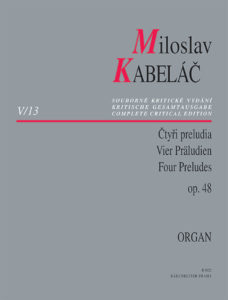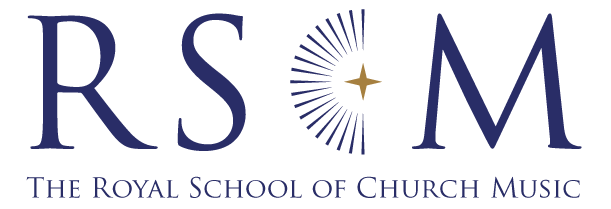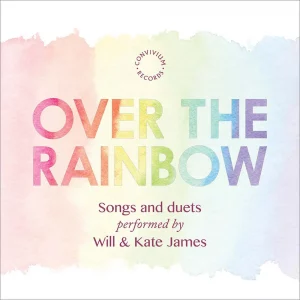Reviews of CDs
* Worth hearing
** Recommended
*** Essential listening
CHRISTMAS CDs
**
GAUDETE!
Choir of Bath Abbey / Tim Palmer (percussion) / Shean Bowers (organ) / Huw Williams / Regent REGCD555
A spirited performance of Gaudete from the 16th-century Piae Cantiones, complete with dramatic tabour accompaniment, launches this CD of Christmas music, familiar and unfamiliar. H. Walford Davies’s setting of The Lamb and Harold Darke’s In the bleak midwinter are given beautifully tender performances. The jazzy harmonies of Paul Edwards’s No small wonder are exciting and performed to great effect – although some of the high notes sound a bit of a struggle. Morten Lauridsen’s O magnum mysterium is a particular highlight: the tempo allows the music space to breathe, the dissonances have a special poignancy about them and the dynamics are well balanced. It is good to hear two settings of Away in a manger – one in Edgar Pettman’s arrangement of a traditional Normandy melody, the other with the more familiar tune arranged by Huw Williams. The a cappella singing of the choir is generally excellent, with a balanced vocal blend. It is a pity that Shean Bowers doesn’t get a solo item to put the Klais organ properly through its paces.
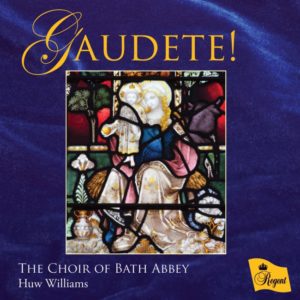
**
HARK! WHAT A SOUND: ADVENT FROM DUBLIN
Choir of St Patrick’s Cathedral, Dublin / David Leigh, Harry Meehan (organ) / Stuart Nicholson / Regent REGCD556
This recording is well thought out, as it intersperses the ‘O’ antiphons with a mixture of 20th-century settings of medieval texts and more recent compositions. There is clearly a strong choral tradition at Saint Patrick’s and the choir is particularly impressive in the a cappella items on the CD. The high notes of Philip Ledger’s Adam lay ybounden present no problems and sound effortless. Stanford’s A Song of Wisdom is a wonderful showcase for the choristers who produce a glorious, confident sound. David Leigh provides sensitive organ accompaniments throughout most of this disc. David Cooper’s Come, my Way and Richard Shephard’s Never weather beaten sail are new discoveries and sung with conviction. Jack Oades’s haunting There is no rose is sung beautifully with the choir accompanying the soloists with great sensitivity. The harmonic complexities of their own (a cappella) parts are sung with ease. Stuart Nicholson’s jovial arrangement of Tomorrow shall be my dancing day fares less well: the tempo is exceedingly fast, although the choir should be commended for keeping up!
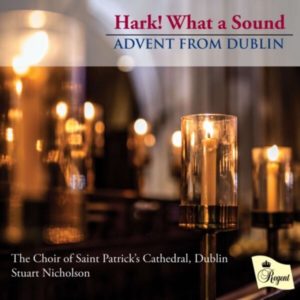
**
OVER THE RAINBOW
Songs and Duets performed by Will & Kate James / Sarah Butcher (cello) / Malcolm Archer (piano) / Convivium CR059
This is a soothing recital of meditative pieces sung by siblings Will and Kate James, two of the finalists in the 2019 BBC Radio 2 Young Choristers of the Year competition. The performances are impressive with clear, crisp diction. There’s a wide variety of music and styles, ranging from John Dowland’s Flow, my tears and Benjamin Britten’s Corpus Christi Carol to Simple Gifts and ‘Lord of all hopefulness’, alongside Robbie Williams’s Angels. The singers are well supported by accompanist Malcolm Archer, while Sarah Butcher’s cello playing in Somewhere over the rainbow makes a haunting contribution, although it is sometimes lost in the texture. The main issue is the balance: the engineers have gone to town with the amplification of the voices, to the extent that the piano can be lost. In the duets the melody line is enhanced, at the expense of the supporting line. This is a pity, but the CD is otherwise a most enjoyable listen.
***
PUER NATUS EST: CHRISTMAS DAY MASS FROM BUCKFAST ABBEY
Choir of Buckfast Abbey / Matthew Searles (organ) / Philip Arkwright / Ad Fontes AF005
This CD is an authentic presentation of the choral and organ music included in the Christmas Day Solemn Mass at Buckfast Abbey. Adeste fideles, sung in Latin with great gusto and enhanced by a powerful organ accompaniment complete with Zimbelstern, gets this CD off to a great start. George Malcolm’s atmospheric Missa ad praesepe is given a splendid account – sympathetically sung and the rippling accompaniment of the organ sensitively realized. Matthew Searles is a natural accompanist, never posing a threat of overpowering the choir. Victoria’s O magnum mysterium is equally impressive: the polyphonic textures are given space to breathe and weave in and out without ever getting lost. This recording is a real triumph: an inspired programme and stellar performances. The CD presentation is worthy of a mention too, in a hardback book complete with programme notes, texts, artist biographies and coloured photographs you’ll find the CD tucked away unassumingly at the back!
Ian Munro
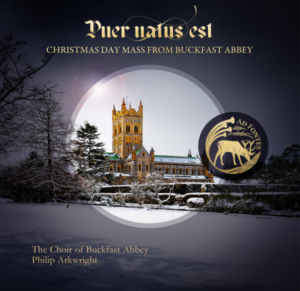
CHRISTMAS CDs
**
NORTHERN LIGHTS
Christopher Herrick plays the organ of Nidaros Cathedral, Trondheim, Norway / Hyperion CDA68376
I’ve never seen the Northern Lights at close quarters but here is a dazzling sonic equivalent from Christopher Herrick. If his claim to have performed over 700 Nordic concerts and broadcasts is anything to go by, he knows Scandinavia and its organs well; instruments from this part of northern Europe feature on 10 albums by him recorded for Hyperion. Nidaros Cathedral in Trondheim is an ancient Gothic wonder, 300 miles north of Oslo; this CD is recorded on the 1930 Steinmeyer organ which dominates the west end.
‘I was merely expecting to have some fun on a seriously large organ,’ writes Herrick. ‘It is an astonishingly expressive instrument, able to do justice … to a wide repertoire.’ There is indeed wide variety here. Four contemporary composers from Norway, Sweden and Denmark are represented along with Dubois, Gigout, Brahms and Yon among others. There are perceptive sparkles – such as Takle’s Yes! which opens this CD, along with Praestholm’s Lord, you give us life and happiness. There’s plenty on offer in the programme – jazzy syncopations, joy, darkness and tenderness; Percy Fletcher’s Fountain reverie shows off gentler stops. There’s also virtuosity such as Pietro Yon’s Second concert study ‘Flying Feet’. It seems that late night Saturday recitals in midwinter have drawn large and responsive audiences; this CD is the next best thing to actually being there.
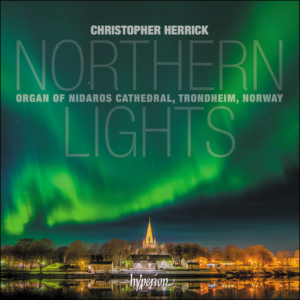
***
IMAGES
Anna Lapwood plays the organ of Ely Cathedral / Signum Classics SIGCD688
Still in her twenties, Anna Lapwood has catapulted onto the organ and church music scene, and brought a breath of fresh air with it. She was the first female organ scholar at Magdalen College, Oxford, and five years ago was appointed director of music at Pembroke College, Cambridge. On top of that there’s a busy concert schedule and support of several initiatives to encourage music education, and for girls and women in particular. At Pembroke College she founded a girls’ choir for 11–18 year olds; #playlikeagirl is her hashtag.
Not surprisingly then, the programme on this debut CD is far from traditional; there are several transcriptions of works by Ravel, Debussy and Messiaen. ‘My years spent as an orchestral harpist have definitely inspired my musical choices,’ Lapwood writes. Wiersinga’s transcription of Ravel’s Le Tombeau de Couperin opens the CD, but mention must be made of Lapwood’s own arrangement for organ of the ‘Four Sea Interludes’ from the opera Peter Grimes by Benjamin Britten; we’re told she played these several times as a harpist with the National Youth Orchestra. Reflecting the backdrop of darkness and tension behind these Interludes is challenging enough for an orchestra let alone an organist, but the subtle tonal colours of the Ely organ are fully explored – nowhere more so than in ‘Sunday Morning’ complete with tubular bell played by Adrian Peacock, the record producer! Elsewhere there are a range of organ works written since 1900, by composers such as Patrick Gowers, Nadia Boulanger, Owain Park and Kerensa Briggs. In detailed CD notes, Anna Lapwood writes about enjoying playing in a locked darkened church or cathedral late at night. This CD was recorded after hours in January 2021 – there’s plenty of dim religious light here.
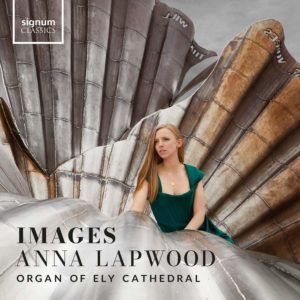
**
SYMPHONIE ROMANE: ORGAN MUSIC BY DUPRÉ, WIDOR AND TOURNEMIRE
Peter Stevens plays the Ruffatti organ of Buckfast Abbey / Ad Fontes AF006
For some, mention of Buckfast and tonic wine in the same sentence will remind them that this drink, originally from the Benedictine brothers at the abbey of the same name, has acquired notoriety in some places. To a lesser extent the same could be said of Buckfast Abbey’s new 2017 organ from the Italian organ builder Fratelli Ruffatti. Its continental tone hasn’t necessarily been to everyone’s taste. There is no question it is a fine instrument and Peter Stevens’s excellent programme of French organ music is another thorough exploration of what is claimed to be the largest organ in the south-west of England.
Three major figures from the early part of the 20th-century Parisian organ scene are represented: Marcel Dupré, Charles-Marie Widor and Charles Tournemire. The CD’s title is taken from the second of Widor’s major symphonic works specifically devoted to plainchant, in this instance the Easter chants ‘Haec Dies’ and ‘Victimae Paschali’. Widor’s treatments of these chants across four movements are nothing short of ingenious, and Peter Stevens’s excellent playing gives them breath and space. Similarly Dupré’s Cortège et Litanie is typical of the unhurried feel of this collection. Coupled with an excellent recording, there is a real sense of sitting in a Parisian church. Although this is an Italian instrument, Philip Arkwright (the executive producer and Abbey’s director of music) explains in the comprehensive and beautifully produced sleeve notes: ‘the tonal character of the Grand-Orgue in the west gallery is inspired by the French Romantic tradition and the scalings and manufacturing practices of [French organ builder] Aristide Cavaillé-Coll.’ Anyone unable to take the Eurostar for a Parisian organ binge (with or without tonic wine) could do worse than snap up this CD.
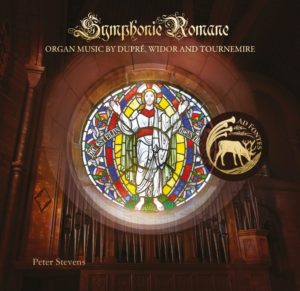
**
FREAK OUT
Tom Bell plays the Grand Organ of the Royal Hospital School Chapel, Holbrook / Ross Garrod (percussion) / Regent REGCD540
This collection is subtitled ‘Extraordinary Music for Organ’; it’s certainly that all right – this is contemporary organ fare and the traditional organ music lover isn’t necessarily going to enjoy it. That said, there are some familiar names in the programme list. James MacMillan’s Le tombeau de Georges Rouault was commissioned by Birmingham Symphony Hall for Thomas Trotter in 2003: a large-scale piece that sounds well on this Hill, Norman and Beard organ. Giles Swayne’s Riff-Raff was commissioned by the St Albans International Organ Festival in 1983: a skittish, jazzy and funky piece – much musical stamina is required to play it! By contrast, Peter Maxwell Davies’s Veni Creator Spiritus is gentler in mood.
Writing in the sleeve notes, Tom Bell explains that the choice of a Romantic instrument for this recording was his: ‘The intention is to explore a high-octane, breath-taking organ of buccaneering personality, with repertoire to match.’ Some nicely voiced quieter stops are explored as well as full organ! In fact, there’s a ‘health warning’ about the wide dynamic range. There’s a recommendation to listen on high-quality equipment in quiet surroundings. This is advice I initially failed to heed in the car – the crashing opening chord of the final piece (Black Host by William Bolcom) nearly had my wife driving off the road.
Stuart Robinson
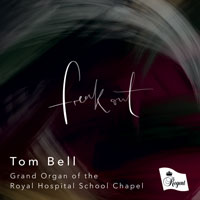
BOOKS
ARTHUR SULLIVAN: A LIFE OF DIVINE EMOLLIENT
Ian Bradley
Oxford 240pp. HB 978-0-19-886326-7 £30.00
In the aftermath of Ian Bradley’s excellent 2013 biography Lost Chords and Christian Soldiers, one might be excused for thinking that Prof. Bradley had little more to reveal about Sir Arthur Sullivan (1842–1900), but not so. This new book is one of a series published by OUP looking at the spiritual lives of prominent people, including politicians, royalty, authors, musicians and philosophers.
By the middle of the last century Arthur Sullivan was one of the few Victorian composers to remain well known to the public, although this was almost entirely due to his operatic collaboration with W.S. Gilbert and the D’Oyly Carte opera company and his song The Lost Chord. In 1977 a Sir Arthur Sullivan Society was founded and, since then, his rehabilitation as a serious composer of music, including symphonies and oratorios, has progressed slowly, greatly helped by major recording projects in recent years.
Sullivan was certainly an amiable, extrovert, entertaining personality and his reputation as a philanderer, drinker and gambler has tended to overshadow his no less passionate, inner self. In this book, using recently discovered letters and diaries, Bradley reveals and suggests a more sensitive persona to the man than the reputation might imply.
It was not usual in those times (or even now) for prominent men to reveal their inmost feelings, especially religious beliefs, to the public. Here we see a glimpse of a particularly sensitive musician, reluctant in his commitment to human relationships and who had a sincere Christian faith. He sometimes declared that his first love was church music, and this features prominently in his output. He was a church organist from 1861 to 1872, during which time he composed anthems, canticles, hymn tunes and the oratorio The Prodigal Son. Soon after leaving his church post, his major oratorio The Light of the World was completed.
Yes, much of the ground covered in Bradley’s 2013 biography is revisited here, but the new perspective makes this a highly recommendable read.
John Henderson

MUSIC, MY LIFE: A GALLIMAUFRY OF MUSICAL MEMORIES
Brian Kay
Umbria Press 296pp. PB 978-1-910074-30-5 £12.95; HB 978-1-910074-31-2 £16.95
It is tempting to turn straight to the chapters describing Brian Kay’s activities with which most of us are familiar, starting at chapter 8 ‘The King’s Singers’, followed by the BBC, ‘Friends and colleagues’ and ‘On the podium’, through to chapter 13 ‘The Really Big Sing’. But all 18 chapters, three ‘Intermissions’ and seven appendices contain insights into the wide-ranging musical world that is so well summarized by the author as Music, my life.
From life as a King’s College choral scholar to conducting the Really Big Chorus Messiah from Scratch, the anecdotes are engagingly told; much information is conveyed with a light touch and often with humour – which will be expected by anyone familiar with the author’s introductions to the Vienna New Year’s Day concerts or Brian Kay’s Sunday Morning. This well-illustrated memoir would be an excellent Christmas present for those who have sung under Brian Kay’s baton, for enthusiasts for the King’s Singers, and for anyone who has fallen under the spell of a musical ambassador whose life continues to proclaim the joy of having a life of music.

SYMPHONIES FOR THE SOUL: CLASSICAL MUSIC TO CURE ANY AILMENT
Oliver Condy
Cassell 192pp. HB 978-1-78840-318-4 £15.00
This is a strange, intriguing, yet highly satisfying book. An alphabetical list of ailments that might need curing by music is an excuse for a fascinating and mind-expanding compilation of listening suggestions, with brief notes about each piece. The ailments cover a variety of situations, alphabetically from ‘Abandonment’ to ‘Zen (deficiency in)’ – the latter is not the only entry where positive things become an ailment by their absence. Their ‘cures’ cover an astonishing range of music; James Naughtie, in his foreword, summarizes the book as providing ‘reassurance, solace, sheer excitement and fun’.
Often a discussion of well-known pieces leads to a recommendation that confounds expectations. So, under the heading of ‘Ageing’, after discussion of great conductors’ and instrumentalists’ final, life-enhancing performances, there is an anticipated nod to Verdi’s Falstaff, a not-so-expected description of Schütz’s Schwanengesang and a final recommendation of Elliott Carter: ‘The mercurial Flute Concerto, written at the age of 99, is a perfect example, as is the brief but mischievous Dialogues II, his final piece. He wrote it at 103.’ As a cure for a ‘Lack of faith’ we are offered Tallis’s Spem in alium, Palestrina’s Missa Papae Marcelli, Mozart’s Mass in C minor, Parry’s Blest pair of sirens, James MacMillan’s Miserere, and, if those aren’t enough, Bach’s Mass in B minor. Sometimes the pieces are not so much cures as the resultant, so ‘Secrecy’ gives the Byrd and Tallis Cantiones sacrae and Byrd’s three Masses. Other sacred music includes Purcell’s Music for the funeral of Queen Mary (‘Grief’), MacMillan’s Seven last words from the Cross (‘Forgiveness – difficulty with’) and Lauridsen’s O magnum mysterium (‘Stress’). The book may be quirky, but it is always well informed and thought-provoking.
Julian Elloway
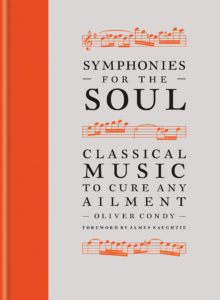
Reviews of printed music
CHORAL MUSIC
E Easy
M Medium
D Difficult
CAROL ANTHOLOGY
NOVA! NOVA! [mostly E/M]
arr. Louis Halsey
SATB with and without keyboard
Shorter House 979-0-708131-52-6 £14.99
This refreshing carol anthology mostly travels well-worn paths, but intelligently and musically, and with arrangements sometimes slightly easier than those in other standard books of carols for choirs. Of the 63 carols, a third are unaccompanied, the remainder having keyboard accompaniments suitable for organ or piano, and 32 have orchestral accompaniments available for rental. Original languages (not English) are included for 19 carols, but 16 of those also have singing English translations.
Themes from Advent (and Annunciation) through to Epiphany are well covered. In addition, there is out-of-season This joyful Eastertide and several secular carols such as Oer yw’r gŵr sy’n methu caru, better known to many of us as Deck the hall with boughs of holly and given in Welsh and English with a bucolic accompaniment. Often there are echoes of harmonic sequences or vocal part writing from previous arrangements, but there are only so many options available to an arranger, and Louis Halsey shows considerable inventiveness, for example in providing rocking accompaniments to cradle songs, or evoking trump and timbal (and soothing flute) in King Jesus hath a garden. Ten carols appear twice in contrasting a cappella and accompanied versions.
Every choir director would find it worth investing in at least one copy, especially given that all the contents are available as separate offprints or downloads.
Stephen Patterson
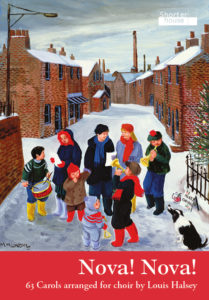
CHRISTMAS, MIXED VOICES
PAST THREE O’CLOCK [M/D]
arr. Stephen Cleobury
SATB with divisions and organ
Encore Publications £2.95
THE LORD AT FIRST DID ADAM MAKE [E/M]
arr. Michael Nicholas
SATB with divisions and organ
Encore Publications £2.50
Stephen Cleobury has retained the familiar Charles Wood harmonization of the first four refrains of Past three o’clock, but gives his own varied treatments of five verses and a grand final refrain. Short organ links add to the interest in this revitalized version of a favourite carol.
Michael Nicholas provides an elaborate keyboard part for The Lord at first did Adam make. It transforms the rather rustic, domestic West Country tune into something more refined, which should appeal to those who like their folk carols to be more polite and ‘church-y’. The original Christmas Eve-specific refrain is not included.
ALL AND SOME [E/M]
Christopher Maxim
SATB
Paraclete Press (RSCM) PPM02036M £1.50
HURRY TO BETHLEHEM [E/M]
Christopher Maxim
SATB or unison voices and keyboard
Paraclete Press (RSCM) PPM02024M £2.50
Sometimes the simplest ideas are the most effective. The music of All and Some is delightfully straightforward: the full choir sings a refrain with rhythms (if not harmonies) suggestive of earlier music; solo or unison voices take it in turns to sing the verses. The 15th-century words, ‘Nowell sing we, both all and some’, have a palindromic rhyme scheme where verses 1 and 5 match, as do 2 and 4. Each verse starts with a Latin phrase that is taken from Christmas Day vespers or Mass. It would be a good choice if something is needed to cut through the sentiment of other carols.
Hurry to Bethlehem, with words written by the composer, gives a choice of organ and piano accompaniments (both given in full), and mixed choir and unison voicings with an optional descant for the latter. There are some nice harmonic sidesteps, a variety of vocal textures, and plenty of interest in the busy keyboard part.
TOMORROW SHALL BE MY DANCING DAY [D]
Jeremy Filsell
SATB with divisions and organ
Encore Publications £2.95
SIR CHRISTEMAS [E/M]
Bernard Trafford
SATB
Banks Music Publications BMP017 £1.95
The angular rising tune of Jeremy Filsell’s Tomorrow shall be my dancing day is followed by step-wise descending ‘Sing O my loves’ with no loss of momentum as the metre is tossed about between 7, 8, 9 and 11 quavers in a bar. ‘In a manger laid’ provides brief repose before the quirky dance returns. It is an exciting piece, although needing careful programming as the final organ glissando and choral shout of ‘dance!’ could easily be a showstopper.
Any winning entry in a BBC Breakfast Carol Competition is likely to be pleasing on the ear, not too demanding on the listener and with a catchy tune. Bernard Trafford ticks those boxes with a calypso rhythm underpinning a melody and harmonies that follow predictable sequences. It will be learnt quickly and sound effective without providing challenges for singers or listeners.

O MERCY DIVINE [M]
Judith Weir
SATB and cello
Chester Music CH87791 £2.99
CRADLE SONG [M]
Cecilia McDowall
SATB
Cadenza Music CAZCMDCS01 £2.25
One might expect a commission for the Master of the Queen’s Music to write a piece to mark the centenary of the Festival of Nine Lessons and Carols at King’s College would result in something special, and so it did. O Mercy Divine, setting words by Charles Wesley, is utterly distinctive in its sound-world, yet with vocal lines in a lilting 6/8 that lightly dance and flow naturally for the singers. The cello part was described by the composer as a musical ‘flying carpet’ on which the choir can comfortably tread and later float above: it is in no way a conventional basso part, but has its own life and character – or rather characters that change between each verse.
Cecilia McDowall’s SATB Cradle Song, setting William Blake’s poem, is unrelated to her upper-voice version of the same words that was published several years ago. It has a haunting, almost hypnotic opening of two rocking chords that set the scene for the opening verses. The music reaches a climax on ‘heart doth wake … night doth break’, at which the music of the whole opening verse is repeated wordlessly. That ending is a compositional risk, but with music so ravishingly beautiful it would pay off in a secure performance.
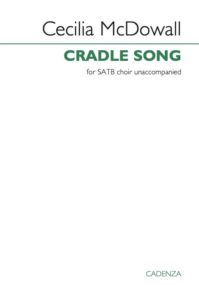
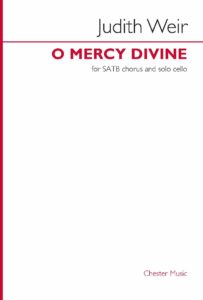
LITTLE LAMB [E]
David W. Jepson
SATB and keyboard
Banks Music Publications ECS606 £1.75
LOVE CAME DOWN AT CHRISTMAS [E]
Ian Hare
SATB and organ
Banks Music Publications ECS607 £1.75
William Blake’s The Lamb encourages composers to err towards the sentimental (unless they resist that as successfully as John Tavener), but David Jepson manages not to be cloying in his setting that is appropriately marked ‘affettuoso’. A rocking keyboard accompaniment supports the vocal lines through modulations that skilfully keep the music fresh and on the move. It is touching and affecting.
In Ian Hare’s Love came down at Christmas a gentle 6/8 tune is shared between different voices within each verse, before a catchy ‘Sing Noel’ refrain. Vocal lines are fully supported by the organ; it is recommended for choirs wanting an easy carol reflecting on Love Incarnate.
AWAY IN A MANGER [E]
arr. Michael Higgins
SATB and piano or harp
Oxford X755 £2.20
A CAROL FOR OUR TIMES [M]
David Blackwell
S solo, SATB
Oxford X748 £2.55
Michael Higgins sets the Kirkpatrick tune for Away in a manger in a straightforward way with a solo first verse and a clean, two-part piano or harp accompaniment. Come the second verse (solo or small group accompanied by four-part wordless choir) and final four-part choir verse, the harmonies suggested by the verse 1 accompaniment are filled out and may not be to everyone’s taste. But the choir writing remains homophonic with the only added quavers in the accompaniment.
David Blackwell has written the words and music of what is indeed A Carol for our Times. A quiet reflective refrain describes the Christ Child, but offered as a contrast to a contemporary boy refugee whose plight is depicted in the verses. There are allusions to other carol texts: ‘He came all so still …’, ‘Herod and kings in their raging …’, and near the end ‘Lully, lullay, thou little tiny child …’ followed by a concluding ‘He comes all so still, still comes, across the sea by night.’ The music, which is not difficult to learn, reinforces the power of those words, and includes a lovely move from minor to major at the start of each refrain, the gentleness of which contrasts with the depiction of ‘our times’.
PEOPLE LOOK EAST [E/M]arr. June Nixon
SSATB (with divisions)
Paraclete Press (RSCM) PPM01841M £2.00
IN THE BLEAK MIDWINTER [E/M]
Stephen Burtonwood
SATB and organ
Sacred Music Press (Lorenz) 10/5265S £1.85
The tempo of June Nixon’s People look East is ‘Affabile’, which sums up the feeling of relaxed happiness in this arrangement of the familiar tune. All the vocal parts are melodic with plenty of contrapuntal imitation and inversion. Singers will enjoy learning it.
Stephen Burtonwood has written his own tune for In the bleak midwinter and harmonized it for the most part conventionally but with some chromaticism creeping into the second half of each verse. The harmonization remains constant although the vocal layout changes with each verse. If you feel that neither of the established tunes is what you need, try this one for a change.
THE CHRISTMAS NIGHT [E]
Russell Hepplewhite
SATB
Banks Music Publications GCL036 £1.95
JOSEPH [M]
Phil Redding
SSAATTBB
Banks Music Publications ECS601 £1.95
The Christmas Night is a poem by L.M. Montgomery (author of the Anne of Green Gables books) that tells the Christmas story in a traditional way, but with a prefatory verse poetically describing the world ‘in slumber deep’, and subsequently seeing the nativity through the eyes of Mary: ‘Mary looked’, ‘Mary saw’, ‘Mary watched’. The music is straightforward, varied in texture and lies in the centre of each voice’s range – ideal for a choir wanting a setting of unusual Christmas words.
Joseph, as its title suggests, offers a different perspective on the story. Composer Phil Redding and author Malcolm Bell have produced a carol-like meditation on the role of Joseph, in the form of an address to him, starting, ‘Smiling from the shadow cast by a star’. Textures are mostly four-part until the end when, in rich eight-part harmony, ‘at manger and cross you stand for us all’.
James L. Montgomery
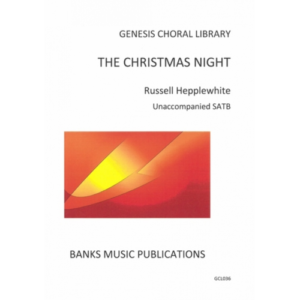
HOLY WEEK
MISERERE [M]
Leonardo Leo ed. Lisa Colonnella
SATB/SATB and continuo
Ut Orpheus (Universal Edition) HS309 £19.95
The great Neapolitan composer Leonardo Leo (1694–1744) wrote his double-choir setting of Psalm 51 in 1739 and it remained in annual use in Naples into the 20th century. Verdi admired it; Wagner heard it and wrote, ‘This is the true music, all the rest is just play [gioco] … every modulation is extraordinary.’ The harmonic intensity is striking from the very first bar. This is a luxurious edition with the music generously spaced over 62 large pages, plus preface and critical apparatus.
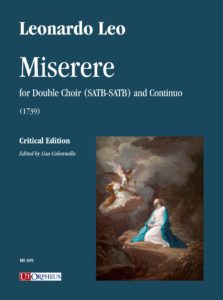
AN ENGLISH PASSION ACCORDING TO ST MATTHEW [M]
Philip Wilby
SATBarB soli, SATB/SATB choir, 2 organs (main and chamber)
RSCM E0469 £10.50
‘Congregation’ should be added to the list of singers needed for performance, since, although concert performance is possible, the role of a participating audience is included. Four hymns using English folk tunes, originally published with harmonies by Ralph Vaughan Williams, provide a particular ‘English flavour’ to this Passion setting. The music propels the story where appropriate, but also allows space, indeed silence, for reflection.
The technical assurance of the writing produces notable results, such as the three times the congregation joins in the end of the ‘This is the truth sent from above’ tune, singing the words ‘your faithless friend can walk with you’. This leads straight into a recitative under which the organ has a distinctive five-note pitch series played spikily on the pedals with the notes sustained on a manual, and repeated, transposed through a sequence of fifths. That section, ‘Before Caiaphas’, concludes ‘But Jesus was silent’, and there is silence before a complete verse of the ‘This is the truth’ tune (words: ‘The messenger the message is’). That ends with the congregation joining in a fourth time with ‘your faithless friend can walk with you’, and introduces the scene of Peter’s denial, followed by more recitative accompanied by the five-note sequence this time in reverse. The composer describes the forwards and retrograde music framing Peter’s denial as a chiasmus, like the symmetrical arms of the Cross.
The work continues with Matthew’s telling of the Passion, concluding with the Centurion’s ‘Truly this man was God’s Son!’ sung triple forte by the choirs, and a congregational ‘It is a thing most wonderful’, also ending powerfully. I look forward to an opportunity to experience a liturgical performance.
Julian Elloway
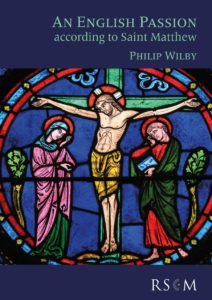
ORGAN MUSIC
CHORAL MUSIC
E Easy
M Medium
D Difficult
CHRISTMAS ORGAN MUSIC
PRELUDE ON A TRADITIONAL POLISH CAROL [E/M]
Vernon Hoyle
Banks Music Publications 14123 £3.95
This could be seen as a companion piece to the Prelude on a Normandy melody (‘Away in a manger’) by the same composer, reviewed in the previous issue of Sunday by Sunday. Here we have the Polish ‘Infant holy, Infant lowly’ treated in a similar way, with two statements of the tune in the centre preceded and followed by a similar but different melody. This prelude and its companion would both be effective, quiet introductions to a Christmas service.
Duncan Watkins
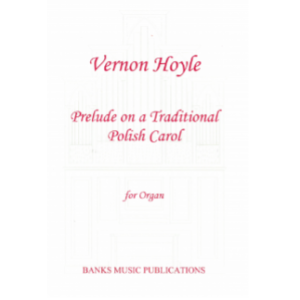
PASSIONTIDE ORGAN MUSIC
VIA CRUCIS: A DEVOTION FOR PASSIONTIDE [M]
Philip Moore
Encore Publications 979-0-9002446-7-3 £10.95
This is a devotional work with words from Eric Milner-White’s 1950 A Procession of Passion Prayers, each prayer introducing an organ reflection. After five pages of prayers come 38 of organ music: the 15 pieces start with ‘The Agony in Gethsemane’ and an eight-note basso ostinato that provides material for the following reflections up to and including ‘The Burial’. A final ‘The Crown’, (Molto adagio e espressivo), brings the sequence, which might be considered a musical Stations of the Cross, to a reflective conclusion. Its strength, it seems to me, is in not having sung words, but allowing the power of music to evoke responses suggested by, but beyond the constraints of, any text. However, the composer allows for the addition of hymns and/or anthems.
Duncan Watkins
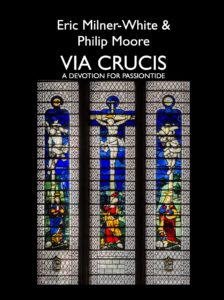
TUTOR
ORGAN PLAYING FROM THE VERY BEGINNING [E]
Carsten Klomp
translated and adapted by Andrew Sims
Butz Verlag BU2990 32.00€
This is the English version of a German organ tutor published in 2011. It is very different from the New Oxford Organ Method recently reviewed in these pages (Sunday by Sunday 95). For a start it assumes no prior knowledge of music: the first unit begins by explaining that there are two crotchets in a minim (and it does call them that – this is for a UK rather than a US market). Rather than being based on ‘real’ compositions from a wide range of organ schools, here most of the short pieces are composed by Klomp himself – all are excellent teaching material and written in a variety of styles, and even managing to include rock and swing. It is generously illustrated with colour photographs of the insides and outsides of organs. The 41 two-page learning units are intended each to provide material for a weekly lesson and practice. An accompanying CD has recordings of many of the pieces and some aural training material. The whole package has been designed to the high standards of modern educational material. As the title says, it is for teaching ‘from the very beginning’ and I imagine that younger pupils in particular will enjoy the playful, humorous approach – very different from that found in other UK tutors.
Duncan Watkins
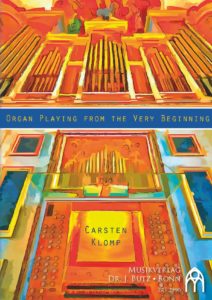
SINGLE COMPOSER ANTHOLOGIES
WORKS FOR ORGAN OR PEDAL PIANO [M/D]
Robert Schumann ed. Martin Schmeding
Carus-Verlag 18.091 34.95€
It all started with a pedalboard which the Schumanns rented for their grand piano. Enthused by the new tonal qualities and performing opportunities offered by the new instrument, Robert Schumann (1810–56) composed his three cycles, Op. 56, 58 and 60, which are the result of combining a strict contrapuntal style with a Romantic character piece. The new Carus Urtext edition contains a detailed foreword with important suggestions on interpretation, enabling performers to do justice to these works on the organ. The editor, Martin Schmeding, professor of organ at the Hochschule für Musik und Theater in Leipzig, is a specialist in the history of the pedal piano; he has provided organists and players of the pedal piano with a welcome upgrade on all previous editions.
As well as an exceptionally clear musical text based on all extant source material, the preface contains informative guidance regarding interpretation, contemporary performance conventions and important information on the history of the pedal piano. In addition, the critical report presents interesting variants and, in the appendix, the reconstructed original version of the Albumblatt (‘Album Leaf’) Op. 124 No. 20 for pedal piano. This important edition will provide performers with all the necessary material for an authoritative interpretation of this important group of works; it is a ‘must have’ for any music library.
Richard Brasier
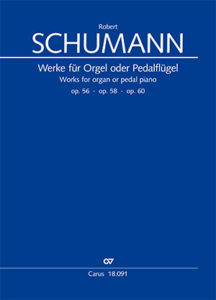
VOLUNTARIES
TOCCATA IN C [E/M]
Edward d’Evry ed. David Patrick
Fitzjohn Music Publications £7.00
Edward d’Evry (1869–1950) was organist of Brompton Oratory from 1897 to 1935 (and assistant there for four years previously). His Toccata of 1896 is a jolly romp with the upside of a particularly easy pedal part under the expected semiquaver figuration that appears only in the right hand. Its downside is that none of the material – neither the Allegro ‘sempre staccato’ patterns nor the contrasting ‘Tranquillamente’ section – is particularly memorable. For organists with a nimble right-hand technique who would like a further toccata in their repertoire, here is one that could be learnt quickly and sounds impressive.
FOUR ORCHESTRAL PIECES [D]
Anton Bruckner, transcribed Erwin Horn
Butz Verlag BU2977
It has often been noted that Anton Bruckner (1824–96), despite being an organist, wrote so little for the instrument. The 10 pieces normally regarded as his surviving organ compositions are all on two staves and not even specifically indicated as being for organ. They are all also mostly early pieces. In 1862, while organist of Linz Cathedral, he wrote four orchestral pieces, and it is these that Erwin Horn has transcribed, preferably for a large, three-manual instrument, giving some insight into what Bruckner might have written and indeed did probably improvise. All four pieces would be useful voluntaries. Especially attractive is the first, a March in D minor that seems to anticipate the first movement of the Symphony No.1 that Bruckner was to complete four years later.
Julian Elloway
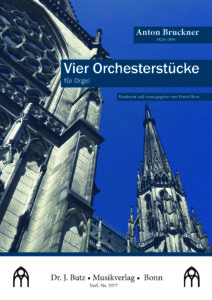
FOR RECITAL USE
FOUR PRELUDES, Op. 48 [D]
Miloslav Kabeláč ed. Jan Hora
Bärenreiter H8022 £9.50
‘The best composer you’ve never heard of’ (according to the conductor Jakub Hrůša), Miloslav Kabeláč (1908–79) spent his life entirely in Prague. An opponent of communism, after 1968 he was effectively silenced in his own country. He wrote for the organ throughout his career, mainly exploiting the power and drama of the instrument; in these Preludes, though, the general mood is intimate and quiet. They are some of the earliest examples of Kabeláč’s proportional notation, intended to express rhythmic and metrical relationships with the greatest clarity.
This volume includes a restored version of the original proportional notation alongside the editor’s transcription into conventional notation, as well as some facsimile plates of Kabeláč’s manuscript (demonstrating beautiful calligraphy). The pieces are little more than two minutes each – compressed, dense, richly dark and chromatic – deserving close scrutiny and needing an inspired imagination to register with enough colour to lift the music from the page. A sound technique is needed for the more technical passages, and though the first prelude is the most accessible (and deeply beautiful), the hand position of some of the chords can be awkward. Such textures as passages of runs doubled in octaves feel more pianistic, but, again, with close study and imagination they would be effective and exciting.
Huw Morgan
